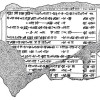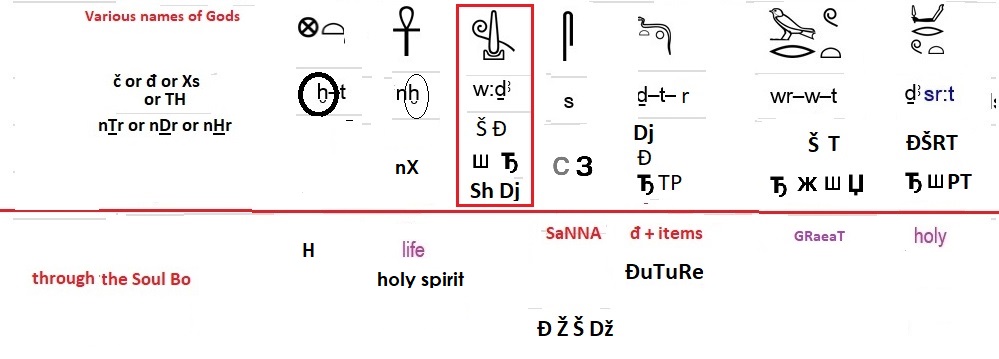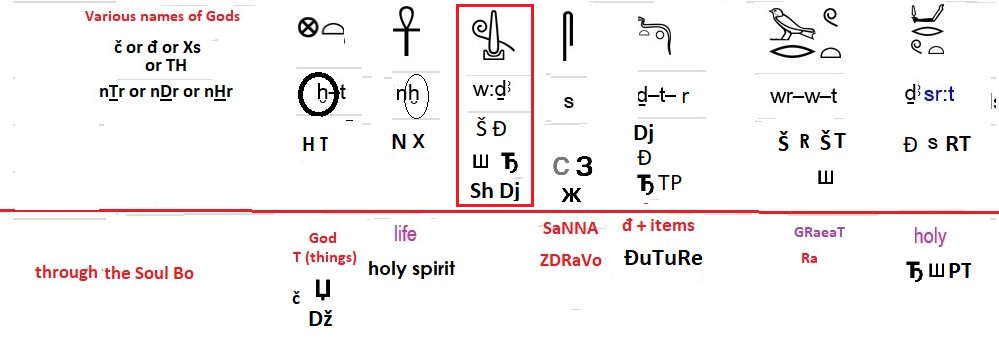
The Mystery of the Rosetta Stone
Unlocking the secret of Egypt's hieroglyphs Art, Education, Symbols and Signs, Spirituality, defaultThe Ancient Egyptian Rosetta Stone
art and Mysticism of Ancient Egyptian gods and consciousness explorations
by Nataša Pantović
You have all heard of the conquest of Alexander the Great in 332 BC, when Ionic Greek (Homer-ian) was the language of the governing classes in Egypt. The Greek ruler, Ptolemy V in 200 BC has commissioned the Rosetta stone, to state publicly that he is the rightful pharaoh of Egypt.
Excavated during the Napoleon conquest of Egypt by French archaeologists, the scholars who had accompanied the French army to Egypt in 1799 AC. It found its way to England, in an exchange of Governments from French to British after the French surrender of Egypt in 1801, and is now in the British Museum... The Rosetta stone is written in three writing scripts: hieroglyphic, demotic, and Greek and it is a block of black granite 115 cm high and 70 cm wide.

Ancient Egyptian hieroglyphics for God, Ancient Rosetta Stone Research Papers
Without the Rosetta stone, we would not have been able to decipher the huge amount of writings, scripts, drawings, temples’ texts left behind by. The Rosetta stone is in two languages: Egyptian and early Ancient Greek. The writing on the Stone is an official message, a decree, about the king Ptolemy V (204 – 181 BC). The decree was copied on to large stone slabs called stelae, which were put in every temple in Egypt. It says that the priests of a temple in Memphis (in Egypt) supports the king.
This ingénues art-work was carved in three writing systems, hieroglyphic, demotic, and the Greek alphabet and this makes the Rosetta stone one of the most important archaeological discoveries in human history.
The last sentence of the Greek text says, “Written in sacred and native and Greek characters.” Scholars identified the “sacred” to the hieroglyphic system, while the “native” referred to the demotic script of the Egyptians.
This is secret and sacred text that has fascinated even Napoleon at the time of his conquest.
When understanding the secret of the language and translations, as a researcher, we got to have in mind that the original deciphering the stone was the work of Thomas Young of England and Jean-François Champollion of France. Thomas Young was very talented and educated men who had Egyptology as hobby in 1814 AC. He correctly identified the name of King Ptolemy, by finding the corresponding name written in Greek.
With our knowledge of Ancient Greek we now know that 3 characters were lost during the transcript to Latin languages, so Ptolemy is the best we could sound we gave to the name of this King. From this he determined which hieroglyphs spelled the name of Ptolemy. This, in turn, gave him the key to the hieroglyphs for p, t, m, y, so P and T within the translations stayed P and T, but could have carried a stronger more defined sounds, more in use in Sacred Rituals of the time.
Learn more about the Mystery of the Ancient Egypt Rosetta Stone

Ancient Egyptian Hieroglyphics for Victory Life Gods Prosperity
Jean-François Champollion, is the founder of scientific Egyptology. An historian and linguist, with the knowledge of French, Latin and Greek and Coptic, the late form of ancient Egyptian that was written phonetically in Greek. Because he understood Coptic he was able to translate the meaning of the ancient Egyptian words.
In 1821 AC, Champollion has brilliantly established an entire list of Egyptian symbols with their Greek equivalents. He tells us, future researchers, that the sacred symbols are both alphabetic and syllabic, and that they also depicted the meaning of the word itself. When studying Chinese, I found the early Chinese characters to have the similar “mission” within their sacred work: to be an alphabetical letter, to be a symbol and to carry a meaning. He also tells us that the Rosetta stone is a translation from the Greek into Egyptian.
Ancient Egyptian Papyrus, a boat man research paper drawings of Temple Walls
He has instigated the science of Egyptology who’s letters, written on papyrus, have been buried under the sand for thousands of years in Egypt’s dry climate. The ancient Egyptians were possibly the first civilisation to practice the scientific arts. Indeed, the word chemistry is derived from the word Alchemy which is the ancient name for Egypt.
Ancient Egyptian numbers 1 to 10 100 1000 10 000 millions
Where the Egyptians really excelled was in applied mathematics.
Hieroglyphic Numbers
The Egyptians had a decimal system using seven different symbols.
1 is a single stroke. All the decimal numbers are represented by the strokes.
10 is a standing circle, Nuit bending from 1 side of the sky to the other.
100 is a spiral, later depicted as a swastika.
1,000 a lotus plant, white moon over a growth.
10,000 is a middle finger, often a symbol of male sexuality in all the worlds cultures.
100,000 is a frog often used for its sexual symbolism in European alchemy, for the resemblance to sperm
1,000,000 is a god (visible as a human being, for other Egyptian gods would have been depicted in a form of an animal or as an invisible – crossed entity) with arms raised above his head.
What is most fascinating is that Egyptians knew about “0” drawing it as an empty column and have used fractions 3,000 years ago, 1/2, 1/7, 1/34.






The Mystery of the Rosetta Stone No comments on The Mystery of the Rosetta Stone: